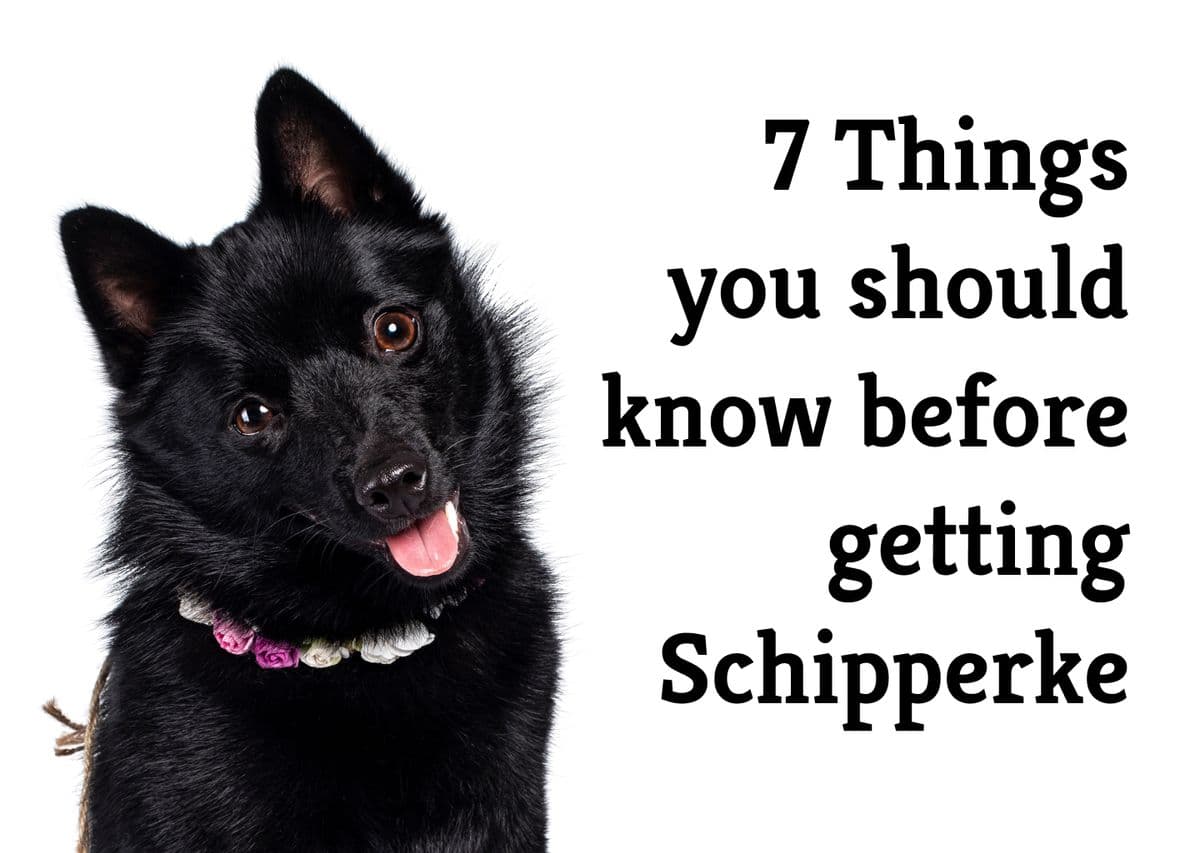7 Things to Know Before Getting a Schipperke

If you’ve ever seen a Schipperke, you probably did a double take. These little black dogs look like something out of a fairy tale — tiny, fox-faced, with a thick mane around their necks, and a personality that could rival any big dog. But despite their charm, they’re still under the radar for most people.
So, why aren’t Schipperkes more popular? Probably because they’re not exactly “easy mode” dogs. But if you’re up for a little challenge — and a whole lot of fun — they’re absolutely worth it.
Here’s what I’ve learned from being around these little dynamos and why they might (or might not) be the right dog for you.
Schipperkes: Small Dogs, Big Personality
Let’s start with the basics: Schipperkes (say it like "Sheep-er-ker") are Belgian dogs originally bred to hunt rats on barges and docks. Their name actually means “Little Captain,” and that job title fits them perfectly — they’re always on patrol, always in charge, and always investigating.
They’re smart, energetic, and full of mischief. Think of them as a pint-sized detective with zoomies.
What Makes Schipperkes Great (If You’re the Right Person)
🧠 Super Smart — and They Know It
Schipperkes are thinkers. They love puzzles, games, and figuring things out — including how to open doors or escape your yard. If you don’t keep them mentally busy, they’ll find their own entertainment (and it might involve your shoes).
Tip: Rotate puzzle toys, teach tricks often, or even try agility training. These dogs thrive when their brain is working.
⚡️ Endless Energy
They may be small, but they’re not lap dogs. A couple of short walks a day won’t cut it. They need playtime, walks, sniffing adventures — and then more playtime.
If you have kids, that’s a perfect match. Schipperkes love children and can play for hours. Just be sure to supervise and teach both the dog and the child how to respect each other’s space.
👀 Top-Notch Watchdogs
Don’t let their size fool you. Schipperkes are fiercely protective and will alert you to every knock, creak, or squirrel outside. They’re not aggressive, but they take their job seriously.
🐶 Generally Good with Other Dogs (and Cats)
With proper introductions and early socialization, Schipperkes usually do well with other dogs and even cats. They’re not big on dog aggression — they’d rather play or explore. Small animals like hamsters or birds, though? Not a great idea. Their prey drive is strong.
Things to Keep in Mind Before Getting a Schipperke
🔗 Must Stay Leashed Outdoors
This isn’t a dog you let off-leash unless you’re in a securely fenced area. They’re quick, clever, and easily distracted by things to chase — leaves, birds, cyclists, you name it. Once they’re off, good luck catching them.
🚧 Escape Artists Extraordinaire
Even in a fenced yard, don’t assume they’re safe. Schipperkes are fantastic diggers and surprisingly good climbers. Reinforce fences (top and bottom!) or keep them on a long leash if you can’t watch them directly.
👥 Suspicious of Strangers
They’re not aggressive, but they’re naturally wary of unfamiliar people. Early socialization helps a lot, but they may never be as friendly as, say, a Golden Retriever. Expect some barking when guests arrive — and maybe during Zoom calls, too.
Is a Schipperke Right for You?
Choose a Schipperke if:
- You love high-energy dogs in a small package.
- You’re home often or can provide lots of mental and physical stimulation.
- You want a watchdog who’s alert but not aggressive.
- You have a secure yard — or are willing to get creative about keeping them safe.
- You’re okay with a dog who might be a little bossy (but in a cute way).
Skip the Schipperke if:
- You’re looking for a chill couch companion.
- You don’t have time for training, play, and supervision.
- You’re not ready for a dog who might outsmart you. (Kidding… mostly.)
Getting Ready for Life with a Schipperke
Before bringing one home, check your yard — and then check it again. Secure fencing is a must. And stock up on enrichment toys, puzzle feeders, and maybe even agility gear. Basic obedience training is important, but don’t be surprised if your Schipperke tries to negotiate the rules.
Overall, they’re smart, spunky, and packed with personality. If you’re ready to keep up, a Schipperke will be your loyal (and hilarious) partner-in-crime.